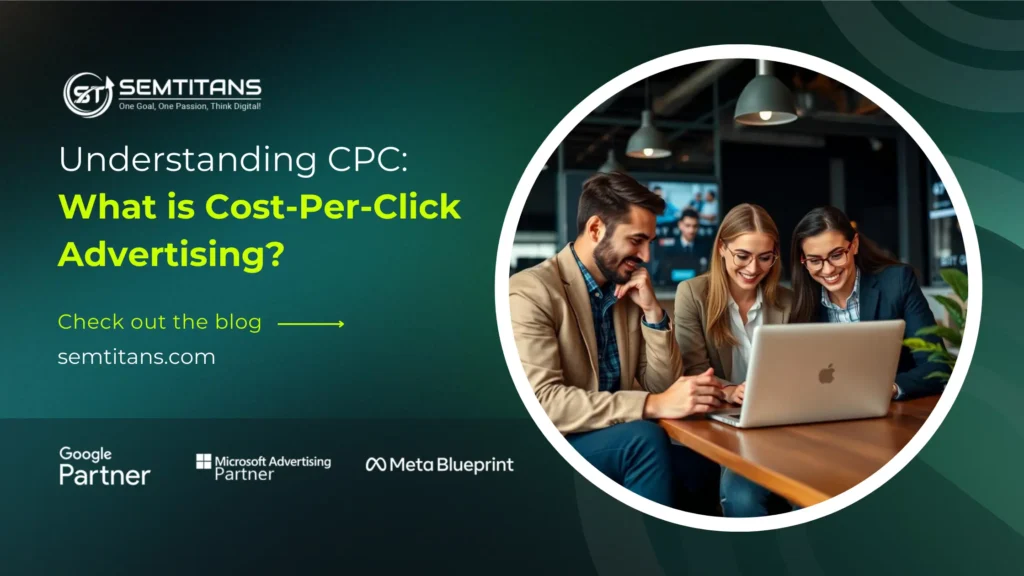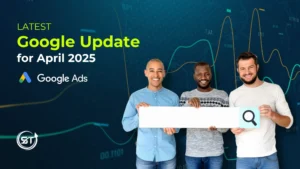
Welcome back to another segment of our CPC series. In our previous blog, we introduced understanding CPC, explained how to calculate it, and discussed the different types of CPC ads. Among the various campaign metrics, CPC stands out in Google Ads. It measures the amount advertisers are willing to pay each time a user clicks on their ad, which is important for budget management and campaign performance. With the proper working functionality of CPC, it becomes easier to navigate the competitive bidding domain for marketers and make strategies accordingly. Let’s look into the cause and impact of the increase in CPC.
Table of Contents
ToggleCPC in Google Ads:
Cost Per Click, most of the time, retains its importance in the bidding as it affects the ad placement. This means that higher bids can increase visibility in search results for ad placement, which is a key focus of effective Google ads management services. Let’s take a quick look at some of the factors that influence CPC in Google Ads to understand more:
Bidding Strategy:
In Google Ads, there are several bidding strategies which you can choose from. In manual CPC, the advertiser is allowed to set a maximum CPC for each keyword or ad group, thus giving the control back to the advertiser but demanding management. The enhanced CPC (eCPC) will automatically adjust your bids to maximize conversions within your budget. Then, there are maximize clicks that focus on getting the most clicks possible and are useful for driving traffic. Additionally, the maximize conversions and maximize conversion value strategies allow us to set CPA limits for conversions and ROAS limits for revenue, enabling us to adjust bids accordingly. Each strategy serves different campaign goals so you can choose based on your needs.
Quality Score:
It is determined by three key factors: ad relevance, landing page experience, and click-through rate (CTR). Ad relevance measures how well your ad matches and what users search for. While landing page experience assesses the quality and relevance of the page users see after clicking your ad. CTR shows how often users click on your ad compared to how usually it is displayed. CTR is also influenced by the bid amount we assign to each keyword or to the campaign overall. A higher quality score can mean lower costs and better ad placement.
Keyword Research and Selection:
Choosing the right keywords is important for successful ad campaigns. With broad match, your ad can also appear for searches related to your keyword. This will lead to many clicks but may not be as relevant. You have more control with phrase match because your ad only shows up for searches that include your exact phrase or close variations.
Budgeting and Costs:
It’s important to set a daily budget in Google ads, and that is the most you want to spend per day. Google will then distribute this budget throughout the day based on user search patterns, ensuring your ads are visible when potential customers are searching. Your total costs will depend on your average cost per click (CPC) and the number of clicks your ads receive.
Performance Tracking and Optimization:
Tracking performance while considering a few things is important. The first thing is keeping an eye on your CPC, which stands for cost per click. If it is too high, you might need to adjust your bids to get more clicks for less money. Another important metric to look at is your conversion rate. This tells you how many clicks are turning into sales or sign-ups.
Root Causes of Increasing CPC
Increased Competition:
As marketing world is becoming competitive, leading to multiple advertisers going after the same keywords or audience segments, causing the cost per click (CPC) to increase. Additionally, shifts in seasonal trends or market conditions can result in sudden spikes in competition.
Keyword Changes:
Keywords play a crucial role in digital marketing, which also helps in determining CPC. Knowing what keywords you choose, like tougher keywords or switching to more general, can lead to increased CPC. You can expect CPC to go up if you’re going after pricier keywords or keyword relevance drops. Generally, long-tail keywords come with lower CPC than popular short-tail keywords.
Ad Quality Score:
Ads of low quality because of low click-through rates or poor landing page experience result in poor Quality Scores, which can cause your CPCs to increase. Google usually favors ads that offer a positive user experience by lowering costs.
Bid Strategy Changes:
When you use auto bid tactics like CPA, it could increase your click cost (CPC). This happens as the algorithm works to reach your set goals. In trying to optimize spend, smart bidding might cause a price hike, too, as it lacks transparency. It often targets more valuable users and may raise bids during peak times or on specific devices. Making small manual adjustments can have a cumulative effect, and there is typically a learning curve where costs may initially rise before performance improves.
Market Trends:
Click costs (CPC) can change based on things like the economy and how people are spending. If prices increase or people’s habits change, it can cause competition for clicks, increasing CPC. Industry trends like new rules or privacy laws can control how much you can target your ads and make keyword words cost more. People are willing to spend more on ads on big peak shopping days like Black Friday and Christmas or during festivals. Also, events like big sports matches or new product releases can increase CPC.
Impact of Increasing CPC
Budget Constraints:
Budget constraints can limit the reach of businesses. When the cost per click (CPC) increases, companies may need help to get as many clicks within their budget. For example, if a budget allows 100 clicks at $1 CPC, but the cost increases to $2, then only 50 clicks can be achieved. This decrease in reach can result in lower visibility and brand awareness.
ROI and Profit Margins:
Businesses need to monitor their conversion rates when the cost per click increases. If the conversion rate doesn’t align with the higher costs, the overall return on investment could decrease. For example, if a campaign used to bring in 5 times the investment but now only brings in 3 times due to higher costs, it might be time to rethink your strategy.
Shift in Strategy:
In order to boost profits, businesses may choose to invest in advanced data analytics tools. By using customer data, they can tailor ads to specific demographics or behaviors that result in higher conversion rates, ultimately balancing out the higher CPC.
Audience Targeting:
Getting the right audience is crucial for businesses looking to make a big impact. With so much financial stake on the line, companies are getting more precise in targeting their customers. They’re use techniques like look-a-like audiences and retargeting to ensure their ads reach the correct audience.
Wrapping Up
This blog broke down the ways that CPC influences Google Ads, looking at cause and impact. Advertisers need to grasp the ins and outs of CPC to get the most out of their campaigns.












